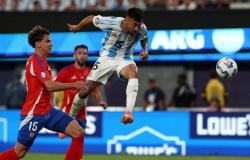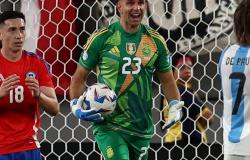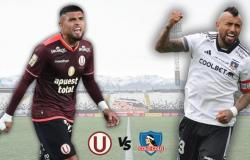In 2005the book was published The Cotian investigation into the always suspected Enrique Nosligliawho today finances Emiliano Yacobitti and, by transitive nature, to the voluble Martin Lousteau.
As soon as the work was published, I ran to the bookstore in order to get a copy and “devour” it on the spot. As I progressed through the pages of the work, my interest abruptly declined due to the absence of concrete facts of denunciation.
The pages of the book say little or nothing about Nosiglia’s suspicious links to the mutilation of the hands of General Juan Domingo Perón in the mid-1980s, where the judge in the case himself died in the middle of the investigation. Jaime Far Suauand half a dozen witnesses. The topic is very well developed in the book. The desecrationby Claudio Negrete and Juan Carlos Iglesiaswhich shows how Nosiglia has concrete participation.
The book The Coti doesn’t even mention the radical operator’s incredible record of garnishments, bounced checks, and disabling of personal accounts. Nor does it echo the comments of some sources familiar with the “cloth” who claim that Nosiglia would be the owner – through front men (1) – of the firm. Arwen SAwith legal address at 4040 Mansilla Street, and in which money would be laundered (2).
The book in question says nothing about the death of Eduardo Cortesa former Coti “employee” who “died” when two people pushed him onto the subway tracks, after he tried to extort Nosiglia.
The Cortes does not remove the Nosiglia
The meeting with an informant – a former friend of Eduardo Cortés – at the end of 2000 was the kick-off to begin to become interested in this death. This is what the source in question says: “Cortés was killed for knowing a lot and for being stupid. He threatened them that if they did not provide a monthly allowance to the wife and daughter – based in Mar del Plata -, he would denounce Coti and his people for things that he knew about them. (sic).
According to my interlocutor, Cortés had gone to see Nosiglia with a “typed testimony” that hinted at certain illicit operations and that would be made known if the Coti did not meet the extortioner’s requirements. A few days later, he was murdered.
“The fact of having ordered him to be pushed under a subway train, and they caused his death… well, we are sure that it is the type of thing that is not forgotten in life. Much less, when someone has the possibility of reporting on the contents of the folder – authored by Cortés – that was in the possession of a famous law firm.”my informant states with eloquent anger, adding that “The two members of the Intelligence Service of the Federal Penitentiary Service, who that afternoon were following Cortés and who was on temporary work leave, are not going to be saved either. “They witnessed the murder and did nothing to prevent it.”.
The manuscript my interlocutor is talking about is the one shown below. There are a series of dotted lines that were placed by Cortés himself, possibly to mask the main characters, incriminated in very serious crimes:
Year 1983, month of January: Cortés Eduardo buys a candy store in the city of Mar del Plata, on Alem and Alberti streets……………., owned by……………….. in the partnership between Messrs. Jorge ………………. and ……………………, the latter Second Chief of Intelligence of the Police Department of the Province of Buenos Aires, based in the city of………………………………………………
In this candy store, Mr.………………..…….., knows Mr.………………, at that time they were building the SPRING TOWERS.
AUGUST 20, 1984; They arrest Cortés for a case of Robbery and Homicide, in the town……………
Year 1985, MONTH OF NOVEMBER: He was notified of a first instance ruling, with a sentence of THIRTEEN years in prison, so Cortés chose to send his wife to locate Mr. LOMBARDI, so that she could do something for CORTES. Thus, due to his influences, he was recommended to the PROVINCIAL PENITENTIARY SERVICE and over time they granted him the FACE OF TRUST, and in this way he obtained the possibility of working outside the SECURITY FENCE (Administration), in this way they organized together with LOMBARDI, the Evasion. The agreement was that CORTES would leave to work for Mr. LOMBARDI, and people from the NATIONAL GOVERNMENT of that time, then LOMBARDI, promised that over time they would link CORTES with authorities so that he could achieve his objective, which was to work for some INTELLIGENCE SERVICE. OF STATE, and over time he would solve his judicial situation.
On JULY 18, 1987, CORTES carried out the Evasion already agreed upon with LOMBARDI. This man buys him plane tickets to Buenos Aires and covers all the fees at that time, then in Buenos Aires, he gives him a recommendation for Mr. MARIO LOSADA (from the UCR – MISIONES), in turn he introduces him to Mr.… ………….., then because of these two people they got Cortés asylum in PARAGUAY, along with the drug trafficker …….……………….. who worked for this organization and others. This Mr. LOSADA, together with the other person, obtained CORTES a FORGED CREDENTIAL OF………………………….., so that CORTES would not have problems crossing the border, (CURRENTLY KIDNAPPED IN THE CASE No.…………..).
He lived in Paraguay with the DRUG TRAFFICKER, from 1987 to the end of ’88.
DECEMBER 1988: CORTES returns to Buenos Aires, to work alongside Mr. LOMBARDI, justifying that he worked in his company, and living in a UCR Committee, which LOMBARDI presided over and is the owner of. CORTES, after being based in Buenos Aires, became Mr. ……………………., His role was organizer and courier in the drug business.
The Organization was headed by Messrs.
Engineer Hernán Lombardi, Enrique “Coti” Nosiglia, Deputy Lucía Alberti.
Three addresses were used in Buenos Aires for negotiations and to make telephone calls. The merchandise was sometimes loaded into official COTI NOSIGLIA or DANTE CAPUTO vehicles, in the places ………………………………, when the merchandise exceeded 100 kg. It was entered by a company of………………………..
SEPTEMBER 1991: Mr. MELGAREJO had a disagreement with the DRUG TRAFFICKER and due to police problems he decided to leave the home he was occupying, and asked LOMBARDI for a recommendation to go to another city. This is how LOMBARDI got him a recommendation from Dr. Jaroslavsky. and it was addressed to Mr. JOSE LUIS ZABALIA MAYOR in the year 91 in the CITY OF SANTIAGO DEL ESTERO (CAPITAL).
This is how MELGAREJO bought a branded truck..………………….. and took it to that province in order to make it available to the political campaign that ZABALIA was running at that time, and this is how he came to know to a trusted person from ZABALIA, who is Mr.………………..and he asks Mr. MELGAREJO to get him some ARMS for the POLITICAL CAMPAIGN. MELGAREJO always using as a “cartel” that he had many connections, he gets them a Batan 12.70 caliber shotgun, and a Browning 9 mm pistol, this is how MELGAREJO obtains the trust of these people, and this man, together with ZABALIA, FORGES A MUNICIPALITY driver’s license at your expense.
JULY 1992; MELGAREJO, returns to Buenos Aires, due to a marital problem and this is how a very close person files a complaint against him and this is how personnel from the section of the Investigation Brigade of the Federal Police arrest him, currently detained five months ago. CASE N°………………..…Court No. 5 Judge Martín IRURZUN”.
Subsequently, Cortés makes an organizational chart:
“Box 1: Very powerful drug trafficker resides in another country.
Box 2: Courier and organizer in drug marketing. Former deputy mayor of an important company in Buenos Aires.
Box3: Important businessman from Buenos Aires closely linked to former senior leaders of the previous national government. He financially supports the National Committee of the UCR.
Box4: This businessman has a degree in political science. Leader of Franja Morada. Professor at the University of Buenos Aires. IT IS DEDICATED TO LAUNDERING NARCODOLLARS.”
As we said before, after presenting this manuscript, Cortés was assassinated. The book El Coti says nothing about this topic.
I continued participating
One of the sharpest criticisms of Nosiglia’s book has been made by the writer-journalist Jorge Asiswho in his Internet blog stated in 2005 that “The first part (of the book) is shipwrecked in initiatory romanticisms ideal to be skipped with enthusiasm. Provincial platitudes that had already been exhausted when even Sarmiento evoked them. Student girls mythologized by the nostalgia of fifty-somethings with cholesterol, harmless university battles to evoke over dinners with melancholic paunches, that turbulent acne of feverish leftism that was inexorably going to lead to the atrocious militarism of 1976. Meanwhile, the elemental epic of construction unfolds of the National Coordinating Board, that fibroma of the Radical Civic Union that would lead it, in a decade, towards the routine proximity of permanent decline and furious failure. (…) Gallo and Álvarez Guerrero plan on the conceptual opacity of such a process, with a certain discretion, with -let’s say- aseptic sobriety. In general, from the excessive arbitrariness of ‘Facundo’ until now, good biographies usually serve to understand the historical processes that set the scene of the biographer. And precisely in ‘El Coti’, By dwelling on uninteresting aspects of the biography, the authors sometimes lose the possibility of interpreting the substantial generational aspects.which, due to the sheer arrogance of the story, fly over anyway.
(…) Whether or not Mr. Nosiglia has made a coin, whether or not he owns a hotel, a villa, matters very little. It can be a topic for those delving into lateralities, concerns for consortium journalism. That he has operated in favor of Macri in Boca may deserve a comment, even a coffee. Nor, although it is well covered in the book, can the fact that he has been irrelevantly responsible for the forgettable journalistic experience of Tiempo Argentino stand up to an elevator discussion. If we accept it, if we take it as a compelling episode, another biography about Luis Cetrá would have to be commissioned immediately.
(…) El Coti lacks an evaluative interpretation of the ‘enigmatic character’. Perhaps it is missing because the biographers succumbed to the strange seductive capacity of the biographer. They end up buying it, celebrating the codes, as if El Coti had said goodbye with a kiss on the forehead.. An epilogue almost similar to that of Galimberti’s biographers, who at least was absurd and offered an existence with more wood to cut.
Finally, the optimism that radiates on the back cover indicates that ‘Kirchner suspects that El Coti is the head of an ongoing conspiracy.’ If true, the stability of Vulgarcito is definitely assured.”.
Of course, add water.
…
(1) The names would be Monti Miguel Angel, Colominas Graciela Liliana, Varela Carlos Luis, Altof Pedro Dario and Ghelfi Leopoldo Juan.
(2) Another of Nosiglia’s “front” companies would be Editorial Fundamento SAwith legal address at 180 Rivadavia Street in the City of Río Cuarto, Province of Córdoba.






